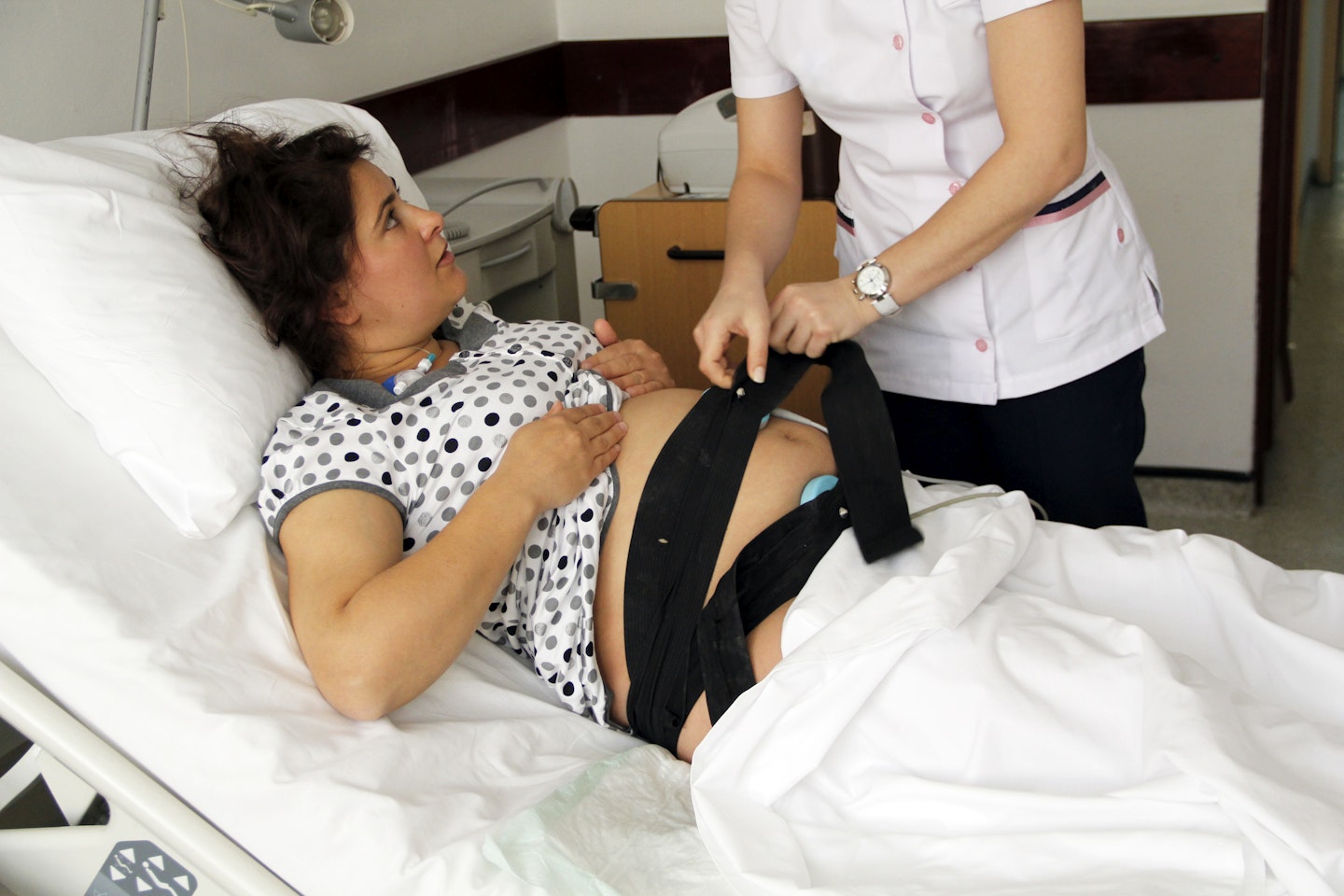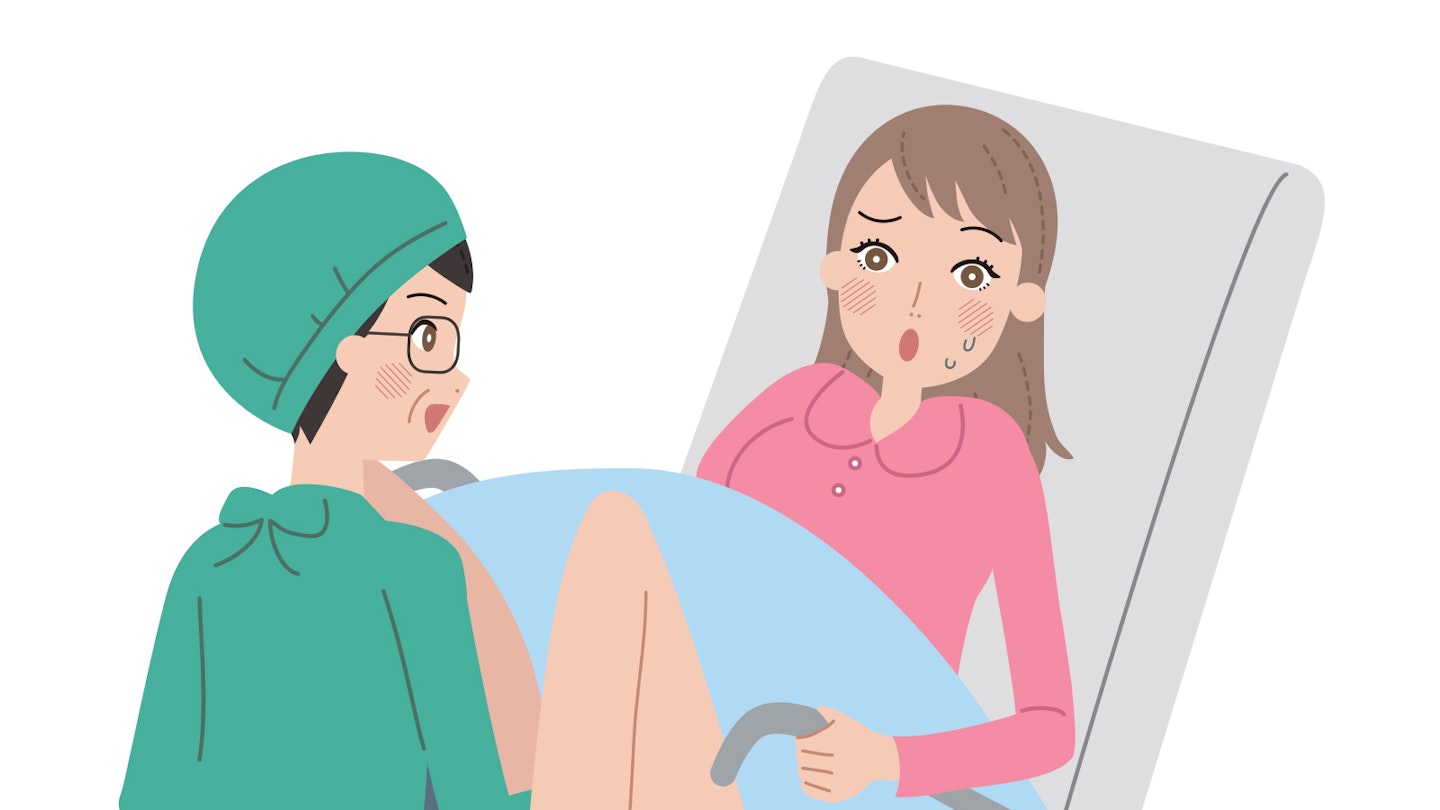As a first-time mum-to-be you've probably got the general gist of what will happen before, during and after labour; braxton hicks, waters potentially breaking, cramps, spotting, contractions, natural birth, c-section...
Well, there's a lot more to think about too, so we asked a bunch of mums to tell us the truth about labour and more importantly, to tell us about all the things they wish they knew before it started.
labour
 1 of 21
1 of 211) You might not realise you’re in labour
You may be so accustomed to getting Braxton Hicks contractions during your pregnancy that when the real ones kick it, it could be hard to tell the difference.
Generally, labour contractions are much more painful, but there have been instances where labour has started and the mother was completely oblivious.
In addition, your waters may break and you might not realise it, so keep an eye out on any leaks or discharge and call your midwife if you have any concerns/questions.
 2 of 21
2 of 212) Labour is long, sometimes.
We’ve all heard of those women who say that the baby practically just popped out effortlessly after only a two-hour labour—and that’s including the time it took for her to get to the hospital—but for the majority of women, labour can be a long waiting game.
In some cases midwives may ask you to either wait it out at home or come in for an assessment. You will only be allowed two birthing partners if you go to hospital. Remember only one person can come into surgery with you should a c-section be the outcome. Visit the NHS website to find out all the information about what happens during the three stages of labour.
 3 of 21
3 of 213) You could be sent home
Your midwife will have already told you to go to the hospital if your contractions are regular and coming about 3 in every 10 minutes or if your waters break.
But in the panic of realising that you’re in labour, you might decide to rush to the hospital sooner instead.
If the doctors and midwives see that your contractions are not as regular as they’d like, or that your waters are still intact, it’s more than likely that they will send you home, even though technically, you’re in active labour.
This isn’t a bad thing though; it’s much better to wait it out in the comfort of your own home.
 4 of 21
4 of 214) Contractions can last a long time without anything actually happening
Just because you’re having contractions and are officially in labour, that doesn’t necessarily mean that you’ll be giving birth to your little bundle of joy any time soon.
The latent phase of labour, also know as the start of labour, is when the cervix starts to soften so it can open. This is when you may feel irregular contractions. It can take many hours, or even days, before you're in established labour (when your cervix has dilated to more than 3cm and regular contractions are opening the cervix).
 5 of 21
5 of 215) Waters break, and just keep on coming out till the baby is born
When waters break in movies, it just looks like a cup of water has been spilled to the floor in between the expectant mother’s legs.
In reality, there is usually so much water in there, that when your waters break, it could just keep coming out non-stop until the baby is out. “I thought it was just one gush of water and then it’s done,” one mum tells us.
“I didn't realise I'd need quite so many pads before I'd even given birth,” says another. “The night my waters broke, I went through a whole pack of thick pads with my waters leaking everywhere. I also went through so many leggings, towels, pads and undies. I just couldn’t get it under control.”
 6 of 21
6 of 216) An IV during labour can be a tad annoying
You’ll have to have an IV fitted as soon as you get to the hospital so they can administer meds in a flash if necessary.
You’re advised to move around while in labour; apparently it could hurt less this way, and encourage the labour to go by faster. Sitting on a birthing ball, pacing the floor, and changing your position often is recommended.
But doing all these things with an IV hanging out of your arm can be slightly uncomfortable, just make sure you ask your birthing partner to assist you to the loo. Everything will be fine.
 7 of 21
7 of 217) You might have to have a urinary catheter
A full bladder can hinder the progress of labour, and if you’re in no position to be going to the loo alone, which is very possible in the final stages, the midwife will install a urinary catheter through your urethra—very often without much warning.
“It feels like you’ve got cystitis all of a sudden,” one mother said. “Getting the catheter fitted and removed was one of the most horrible parts of the whole labour. After I’d had the baby and they took the catheter out, for some reason they had to put it back in again. Worst thing ever!”
These catheters are most often inserted if you’ve had an epidural so that you don’t have any accidents since you can’t feel anything—but that also means that you won’t be able to feel it going in.
 8 of 21
8 of 218) Lots of pain relief is available
It's worth going to antenatal classes before you give birth as part of a 'self-care' to labour plan. Once you've done your research you'll know there are a few different types of pain relief you can opt for, depending on your circumstances that aren't just an epidural. One option is having a Pethidine injecion. This is administered into the thigh or buttock to relieve pain. The NHS says: "It can also help you to relax. Sometimes, less commonly, a drug called diamorphine is used. It takes about 20 minutes to work after the injection. The effects last between 2 and 4 hours, so wouldn't be recommended if you're getting close to the pushing (second) stage of labour." Be mindful however, if there are implications with baby's heart rate, Pethidine will not be given. There are lots to consider during labour, but remember everything will be ok.
 9 of 21
9 of 219) Contractions aren’t always predictable, use an app!
Labour and birth can be unpredictable, contractions sometimes have a mind of their own. “The whole ‘3 in 10’ rule (three contractions in 10 minutes) doesn’t apply to some people,” says one mum.
“I had contractions with no real pattern for two days and then, all of a sudden, they came every two minutes with no warning! Got to the hospital at 7cm dilated. If I’d have known I didn’t have to wait for the ‘3 in 10’ I would have gone in a lot sooner.”
On the other hand, just because contractions are regular, don’t assume that you’ll have appropriately dilated.
Another mum tells us, “No one ever mentioned, not even once, that I can have a 24-hour labour with contractions every 3 minutes lasting 1.5 minutes each from beginning to end, while being only 1cm dilated.”
To be honest, contractions can get very confusing, so try downloading an app on your phone to time them, saves you doing that job.
 10 of 21
10 of 2110) The pain is everywhere, get your birth partner to massage you!
The pain of contractions is not only felt in the abdominal region.
“The pain in my back was worse than the pain I was feeling in the belly,” one mother says. “Even in between contractions, I couldn’t get comfortable anywhere, and it felt like my back was going to break.”
In addition to the back and belly, it’s also possible to feel contraction pain in your legs, and hips, and pretty much everywhere else. Very temperamental, these contractions. One nice tip, get your birth partner to soothe you with massage during labour, this helps.
 11 of 21
11 of 2111) Pushing is hard, but stay calm and all will be well
"The pushing stage of labour is extremely painful, but try something like hypnobirthing to mentally prepare you for the physical side of giving birth. Hypnobirthing can also help if you need to have a c-section."
 12 of 21
12 of 2112) You have to push as if you’re doing a number 2
To help you birth your baby, midwives will often tell you to push as if you’re doing a number two.
“Come on love, push, do a poo, do a poo,” one midwife encouraged her patient in labour. This is most probably why a lot of times, some poo may make its way out while you’re pushing. It's no biggie and is quite common. Remember, this is nothing to worry about, your midwife will wipe it away quickly—along with all the other gunk that’s coming out down there.
 13 of 21
13 of 2113) Pushing is actually not that scary
A lot of people tend to think that it’s the pushing during labour that hurts—again, thanks to media representations that show women screaming in agony while they are pushing their babies out—but for most women, pushing comes naturally and provides a kind of respite.
“Why did everyone scare me with the pushing thing?” asks one new mother. “The pushing part is a relief. The worst pain is the contractions. The labour wasn’t as long as I’d expected, but it was much more painful.”
 14 of 21
14 of 2114) Induction could make labour pains worse
It’s true. Being inducedcan take labour pains up a notch or two, not all the time though! In response to having your waters manually broken, or being administered prostaglandins (the hormone you’re given to kickstart labour), labour pains tend to come on hard and strong. “No one told me that induction and the hormone drip would make my pains so much worse,” we’re told by one mum. “My third birth was fully natural and was a breeze in comparison.” Remember, every labour story is different so induction might not make labour pains worse and furthermore, you might not need to have any inductions in the first place.
 15 of 21
15 of 2115) You might vomit, but it's ok, it's normal
Vomiting during pregnancy is one of the most common symptoms and has almost become synonymous with the first trimester. Painful contractions can make some women feel quite sick that they end up vomiting. Vomiting is the body’s natural way to tell you that the body is currently in overdrive, but don’t worry; it’s completely normal and very common.
 16 of 21
16 of 2116) The epidural could wear off quickly, and sometimes only works on one side
There’s nothing quite like the relief of an epidural after relentless contractions, and the best part is that it takes effect almost immediately. Unfortunately, though, it can wear off just as quick as it starts to work.
Most hospitals nowadays give you your own epidural drip button so that as soon as you start to “feel” again, you can handle your own pain relief.
In some cases the epidural can fail on one side or not work at all. If it works on one side only, then you'll be numb on the one side, you can feel everything on the other, and for some reason, it feels like you are experiencing twice as much pain, but just on one side. However there are other forms of pain relief and your midwives will support you throughout. Keep going, you're a superwoman!
 17 of 21
17 of 2117) You might fall asleep
You weren’t expecting this one, were you? See! It isn’t all bad! Going back to how awesome getting that first hit of epidural is after debilitating contractions, you might be so exhausted that you’ll immediately conk out.
“I was in a 10-hour labour and finally gave in and had an epidural,” one new mum says. “I promptly fell asleep for 20 minutes. It was the best nap I’ve ever taken. Got rudely awakened by excruciating contractions, of course, and begged for more epidural.”
 18 of 21
18 of 2118) There may not be any pain in between contractions
A lot of scaremongering goes on when it comes to what labour is like, with everyone telling you the worst possible stories and scenarios, but something no one tells you is that, with a bit of luck, in between contractions, you might not experience any pain at all. At the worst of it, contractions could just be one minute on, two minutes off.
 19 of 21
19 of 2119) You can ask for privacy!
Midwives, doctors, interns, your partner, your doula… There may possibly be around 8–10 people in the delivery room while you’ve spread-eagled your legs as far as they will stretch, vagina and anus on full display—and quite possibly the rest of you too (it’s way too hot and sweaty for clothes), and it won’t be physically possible for you to care less about it. However, if you're feeling overwhelmed, you can ask for privacy - speak to your midwife and she can clear the room if it's getting to much. This is also a good job to give your birth partner, if you're in too much pain, ask your birth partner to remember to help clear a room with too many people in it.
 20 of 21
20 of 2120) It doesn't always go to plan
The rules in all the pregnancy and birth books stress the importance of having a birth plan.
Our trusty little detailed birth plan that we’ve learned inside out, and have made sure that our partner, midwife, and doctor know by heart too, has not left our side from at least 6 months onwards.
Now while a birth plan is important, like a prep for an exam, your labour might not go as expected. Remember the priority is to keep you well and get baby out safely. The best approach is to have a birth plan but not have your heart set on any one course. Be flexible, and expect that the route to getting your baby out and in your arms might not be the one you would have preferred.
 21 of 21
21 of 2121) Enjoy it!
A number of women—especially those who have had really heavy and painful periods all their lives and are used to abdominal pain of that type—have reported labour not being at all as bad as they had expected.
“Something I wasn't told by anyone other than the wonderful hypnobirthing group I was part of,” says one member of the Mother&Baby Facebook #mumtribe, “is that it's going to be okay. Everyone kept telling me horror stories and how awful it was, and for me that couldn't have been further from the truth. That’s why it’s nice having a doula. They’re there for the mother, constantly encouraging her with physical and emotional support, and making her feel that everything is A-OK.”
Can you relate to any of these? Let us know on Facebook orTwitter!
Now read:

